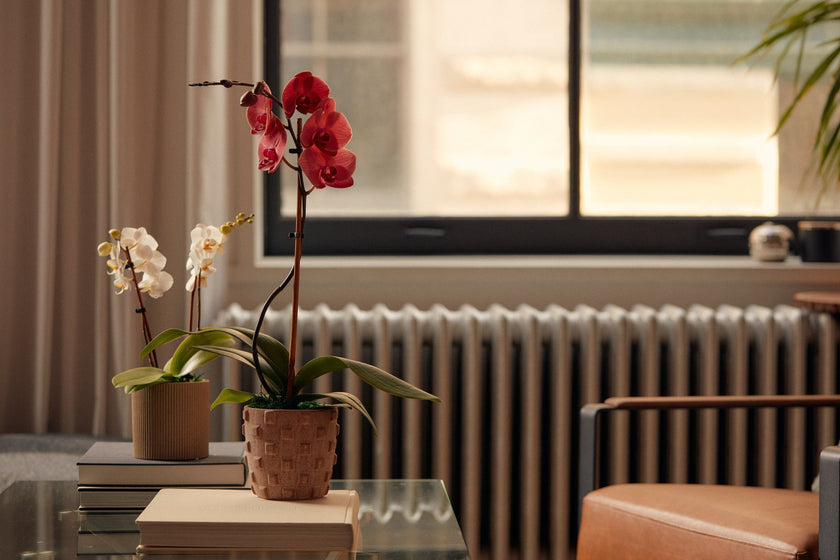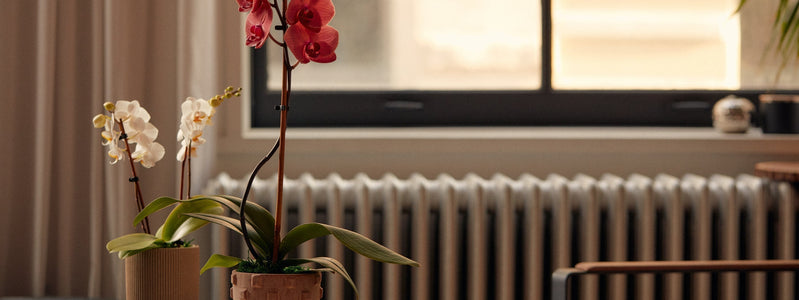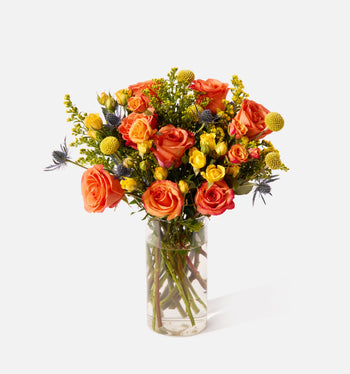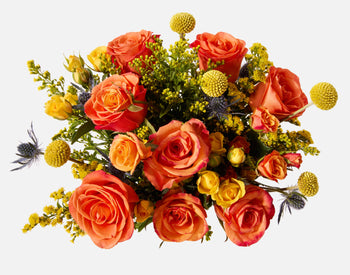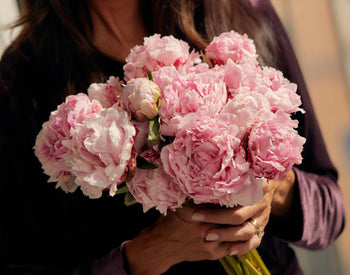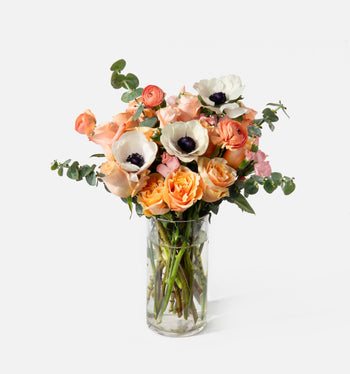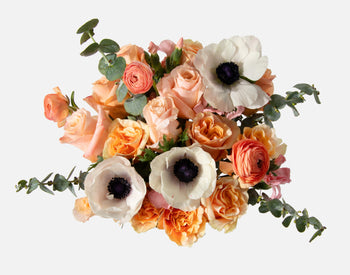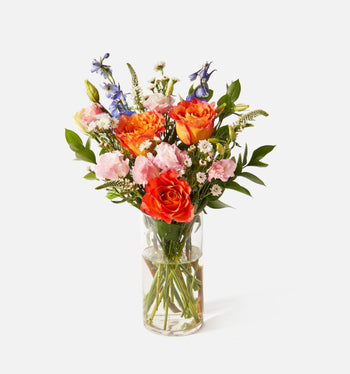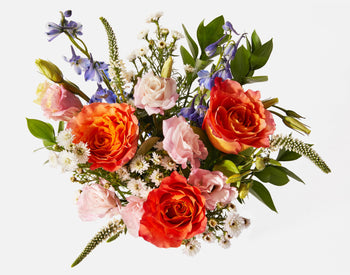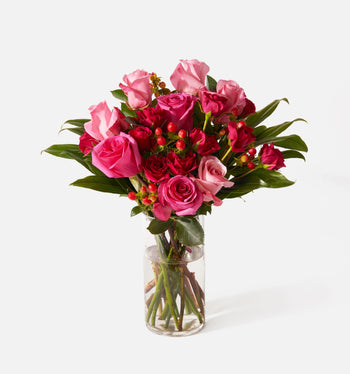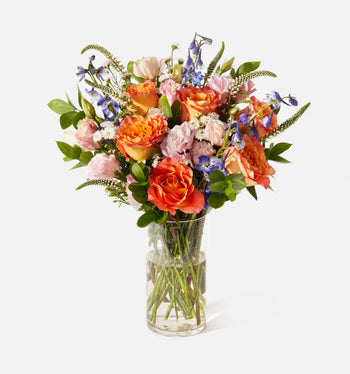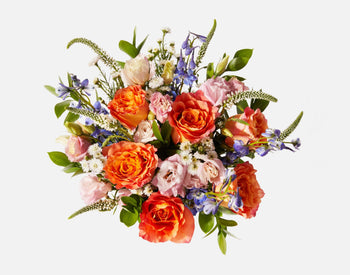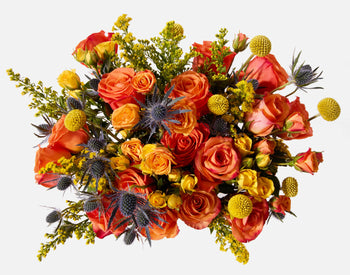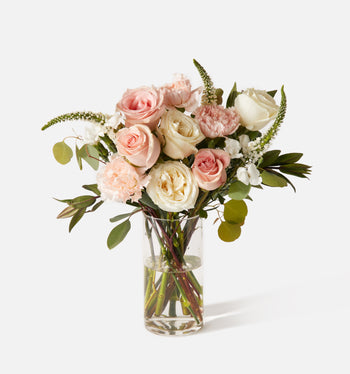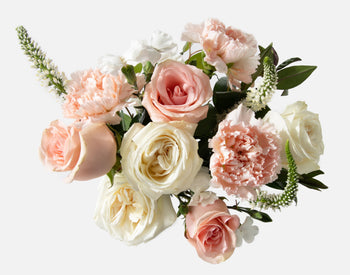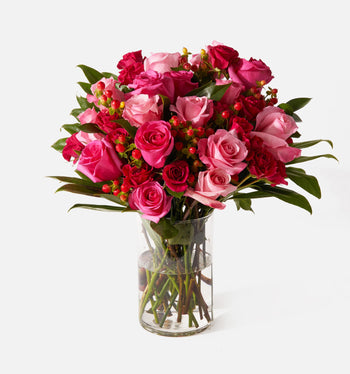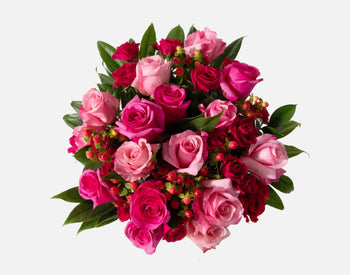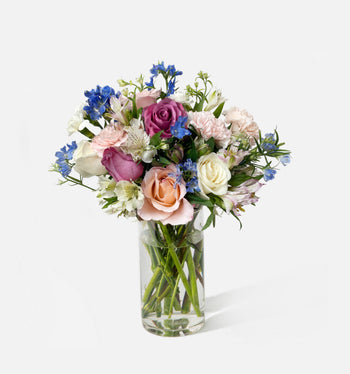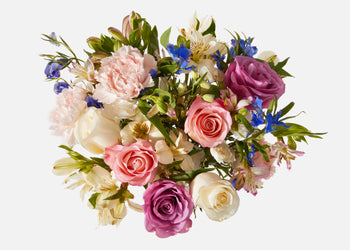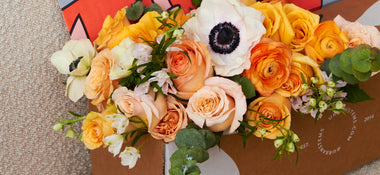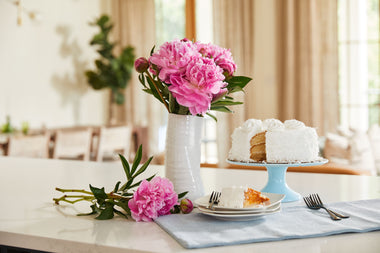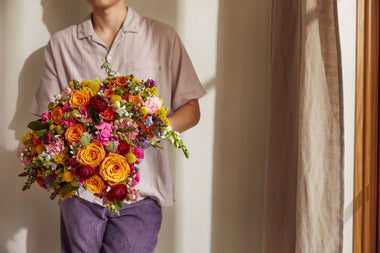Tropical flowers are nature's way of bringing a slice of paradise to your doorstep. Known for their unique colors, interesting shapes, and lush foliage, these blooms bring a sense of warmth and exotic beauty that instantly refines a garden or interior space. Whether you're hoping to create a backyard oasis or add a touch of the tropics to your dining room, these flowers are an excellent choice.
One of the most appealing aspects of tropical flowers is their diversity. From the striking Bird of Paradise to delicate orchids, these blooms offer endless options for gardeners and plant enthusiasts of all levels. Many tropical flowers are surprisingly easy to care for, thriving in both outdoor and indoor settings with the right conditions; think indirect sunlight, consistent humidity, and a touch of attention.
Tropical flowers also bring more than just beauty. They can transform an environment and create a relaxing retreat that promotes creativity. Plus, growing these plants at home is a sustainable way to enjoy exotic blooms year-round!
Ready to bring the tropics to your space? Here’s a list of 33 popular tropical flowers to inspire your garden or home décor. Whether you’re a seasoned green thumb or a curious beginner, there’s something on this list that’s sure to catch your eye.
33 Popular Tropical Flowers to Grow in Your Garden or Home
- 33 Tropical Flower Types
- Benefits of Growing Tropical Flowers
- Tips for Growing & Maintaining Tropical Flowers
- FAQs
33 Tropical Flower Types
1. Bird of Paradise
- Scientific Name: Strelitzia reginae
- USDA Hardiness Zones: 10-12
- Seasons: Late Winter to Early Spring
- Sun Exposure: Full Sun to Partial Shade
- Soil Needs: Well-drained and rich
- Colors: Orange, Blue, White (in some varieties)
2. Hibiscus
The hibiscus, with its gaudy blooms, symbolizes beauty and grace. Native to tropical and subtropical regions, it does the best in warm climates and is commonly found in gardens and landscapes. The hibiscus comes in a variety of vibrant colors, making it a gorgeous addition to any garden.
- Scientific Name: Hibiscus rosa-sinensis
- USDA Hardiness Zones: 9-11
- Seasons: Summer to Fall
- Sun Exposure: Full Sun
- Soil Needs: Well-drained, slightly acidic
- Colors: Red, Pink, Yellow, White, Orange
3. Orchid
Orchids are one of the most diverse and beautiful flowering plants in the tropical world. With over 25,000 species, orchids are symbols of love, beauty, and strength. These exotic flowers are commonly grown in rainforests and tropical environments.
- Scientific Name: Orchidaceae
- USDA Hardiness Zones: 10-11
- Seasons: Year-round, depending on species
- Sun Exposure: Indirect, bright light
- Soil Needs: Well-drained, acidic, orchid mix
- Colors: White, Pink, Purple, Yellow, Green
4. Plumeria (Frangipani)
Plumeria flowers are known for their sweet scent and vibrant colors. They are commonly associated with tropical climates, like Hawaii, where they symbolize love, positivity, and new beginnings. Plumerias are often used in leis!
- Scientific Name: Plumeria alba
- USDA Hardiness Zones: 10-12
- Seasons: Summer to Fall
- Sun Exposure: Full Sun
- Soil Needs: Well-drained, sandy
- Colors: White, Yellow, Pink, Red
5. Anthurium
Anthurium, also known as the "flamingo flower," is recognized for its shiny, heart-shaped spathes and bright spadices. It’s native to Central and South America and symbolizes hospitality and prosperity.
- Scientific Name: Anthurium andraeanum
- USDA Hardiness Zones: 10-11
- Seasons: Year-round
- Sun Exposure: Indirect light
- Soil Needs: Well-drained, slightly acidic
- Colors: Red, Pink, White, Purple
6. Ginger
Ginger flowers are striking and feature unique, spiral-like petals and vibrant colors. Native to Southeast Asia, they are often grown for their fragrant blooms and edible roots. They are symbols of strength and resilience.
- Scientific Name: Zingiber officinale
- USDA Hardiness Zones: 9-11
- Seasons: Late Spring to Early Fall
- Sun Exposure: Full Sun to Partial Shade
- Soil Needs: Well-drained, rich in organic material
- Colors: Yellow, Red, Pink, White
7. Bougainvillea
Bougainvillea is known for its brilliant, paper-like bracts that surround the true flowers. It thrives in tropical climates and is often seen as a hedge or ground cover. It symbolizes passion and beauty!
- Scientific Name: Bougainvillea spp.
- USDA Hardiness Zones: 9-11
- Seasons: Year-round
- Sun Exposure: Full Sun
- Soil Needs: Well-drained, slightly acidic
- Colors: Pink, Purple, Red, White, Orange
8. Ixora
Ixora is a small shrub native to Asia and the Pacific Islands, producing dense clusters of small, colorful flowers. Known for its bright blooms, it’s often seen in tropical gardens and symbolizes passion.
- Scientific Name: Ixora coccinea
- USDA Hardiness Zones: 9-11
- Seasons: Year-round
- Sun Exposure: Full Sun
- Soil Needs: Well-drained, acidic
- Colors: Red, Pink, Yellow, Orange
9. Tropical Hibiscus
The tropical hibiscus features large, vibrant blooms and is often found in warm climates. Its significance is often tied to beauty and fame, making it a popular choice for gardens and as a potted plant.
- Scientific Name: Hibiscus rosa-sinensis
- USDA Hardiness Zones: 9-11
- Seasons: Summer to Fall
- Sun Exposure: Full Sun
- Soil Needs: Well-drained, slightly acidic
- Colors: Red, Pink, Yellow, White
10. Calla Lily
Calla lilies are known for their elegant, trumpet-shaped blooms. While native to southern Africa, they are widely cultivated in tropical climates. They represent beauty, purity, and rebirth.
- Scientific Name: Zantedeschia spp.
- USDA Hardiness Zones: 8-10
- Seasons: Late Spring to Summer
- Sun Exposure: Full Sun to Partial Shade
- Soil Needs: Moist, well-drained, slightly acidic
- Colors: White, Yellow, Pink, Purple
11. Canna Lily
Canna lilies are tropical plants that produce large, colorful blooms. They are hardy in warm climates and symbolize beauty and strength. They are perfect for creating a tropical ambiance in gardens or as potted plants.
- Scientific Name: Canna indica
- USDA Hardiness Zones: 7-10
- Seasons: Summer to Fall
- Sun Exposure: Full Sun
- Soil Needs: Moist, well-drained
- Colors: Red, Yellow, Orange, Pink
12. Crown of Thorns
Crown of Thorns is a succulent native to Madagascar, producing small, colorful flowers amidst thorny stems. It symbolizes resilience and strength, thriving in arid tropical conditions.
- Scientific Name: Euphorbia milii
- USDA Hardiness Zones: 9-11
- Seasons: Year-round
- Sun Exposure: Full Sun
- Soil Needs: Well-drained, sandy
- Colors: Red, Pink, Yellow, Orange
13. Lantana
Lantana is a hardy flowering plant with clusters of bright flowers that attract butterflies. It’s often found in tropical and subtropical regions and symbolizes energy and vitality.
- Scientific Name: Lantana camara
- USDA Hardiness Zones: 8-11
- Seasons: Summer to Fall
- Sun Exposure: Full Sun
- Soil Needs: Well-drained, slightly acidic
- Colors: Yellow, Orange, Red, Pink, Purple
14. Heliconia
Heliconia, known for its exotic appearance, is often referred to as "lobster claws." Native to Central and South America, it’s a symbol of joy and beauty, frequently used in tropical landscaping.
- Scientific Name: Heliconia spp.
- USDA Hardiness Zones: 10-12
- Seasons: Year-round
- Sun Exposure: Full Sun to Partial Shade
- Soil Needs: Well-drained, rich in organic matter
- Colors: Red, Yellow, Orange, Green
15. Bromeliad
Bromeliads are known for their striking, colorful bracts that surround their tiny, tubular flowers. Native to Central and South America, they’re commonly found in rainforests and are symbols of beauty and resilience. These plants thrive in humid environments and make great indoor décor.
- Scientific Name: Bromeliaceae
- USDA Hardiness Zones: 10-12
- Seasons: Year-round
- Sun Exposure: Indirect light
- Soil Needs: Well-drained, slightly acidic
- Colors: Red, Pink, Yellow, Orange, Purple
16. Chenille Plant
The Chenille plant is recognized for its long, red, fuzzy flowers that resemble caterpillars. Native to tropical regions of the Americas, it thrives in warm, humid environments. It’s a unique addition to gardens and symbolizes transformation and vitality.
- Scientific Name: Acalypha hispida
- USDA Hardiness Zones: 9-11
- Seasons: Summer to Fall
- Sun Exposure: Full Sun
- Soil Needs: Well-drained, slightly acidic
- Colors: Red, Pink
17. Protea
Protea, often called the “king protea,” is one of the oldest and most unique flowering plants. Native to South Africa, it thrives in tropical and subtropical regions. Its striking, spiky appearance and large blooms symbolize strength and diversity.
- Scientific Name: Protea cynaroides
- USDA Hardiness Zones: 9-11
- Seasons: Late Winter to Spring
- Sun Exposure: Full Sun
- Soil Needs: Well-drained, sandy
- Colors: Pink, Red, White, Yellow
18. Jasmine
Jasmine flowers are prized for their sweet fragrance and delicate, star-shaped petals. Found in tropical and subtropical regions worldwide, jasmine symbolizes love, purity, and beauty. It’s often used in aromatherapy for its calming properties.
- Scientific Name: Jasminum spp.
- USDA Hardiness Zones: 8-10
- Seasons: Spring to Summer
- Sun Exposure: Full Sun to Partial Shade
- Soil Needs: Well-drained, slightly acidic
- Colors: White, Yellow, Pink, Purple
19. Medinilla
Medinilla, also known as the "rose grape," is a tropical plant known for its striking pink or purple flowers. Native to Southeast Asia, it thrives in humid, tropical conditions and symbolizes beauty and grace. Its unique hanging blooms make it a favorite for indoor gardens.
- Scientific Name: Medinilla magnifica
- USDA Hardiness Zones: 10-12
- Seasons: Year-round
- Sun Exposure: Indirect light
- Soil Needs: Well-drained, slightly acidic
- Colors: Pink, Purple
20. Angel’s Trumpet
Angel’s Trumpet is known for its large, trumpet-shaped flowers that hang downward like bells. Native to South America, this plant is often used in tropical landscapes and symbolizes transformation and spiritual awakening.
- Scientific Name: Brugmansia spp.
- USDA Hardiness Zones: 9-11
- Seasons: Summer to Fall
- Sun Exposure: Full Sun to Partial Shade
- Soil Needs: Well-drained, moist
- Colors: White, Yellow, Pink, Orange
21. Parrot Heliconia
Parrot Heliconia is known for its colorful, bird-like flower clusters. Native to Central and South America, these tropical plants symbolize vibrant beauty and exotic allure. The unique shape of the flowers makes them a favorite in tropical gardens.
- Scientific Name: Heliconia psittacorum
- USDA Hardiness Zones: 10-12
- Seasons: Year-round
- Sun Exposure: Full Sun
- Soil Needs: Well-drained, rich in organic matter
- Colors: Red, Orange, Yellow, Green
22. Urn Plant
The Urn Plant is a type of bromeliad that has striking flowers, growing in a vase-like rosette shape. It thrives in humid conditions and is found in tropical areas of the Americas. It symbolizes stability and beauty.
- Scientific Name:
- Aechmea spp.
- USDA Hardiness Zones: 10-11
- Seasons: Year-round
- Sun Exposure: Indirect light
- Soil Needs: Well-drained, slightly acidic
- Colors: Pink, Red, Purple
23. Blue Passionflower
The Blue Passionflower is famous for its intricate, almost surreal flower structure. Native to tropical America, this plant symbolizes passion, creativity, and spiritual growth. It’s also known for its ability to attract pollinators like bees and butterflies.
- Scientific Name: Passiflora caerulea
- USDA Hardiness Zones: 6-10
- Seasons: Summer to Fall
- Sun Exposure: Full Sun to Partial Shade
- Soil Needs: Well-drained, slightly acidic
- Colors: Blue, White, Purple
24. Moonflower
Moonflower, a night-blooming species, is known for its large, fragrant, white flowers that open in the evening. This plant symbolizes mystery and tranquility and thrives in warm, tropical climates.
- Scientific Name: Ipomoea alba
- USDA Hardiness Zones: 10-11
- Seasons: Summer to Fall
- Sun Exposure: Full Sun
- Soil Needs: Well-drained, rich in organic matter
- Colors: White
25. African Violet
African Violets are compact, indoor-friendly plants that are loved for their soft, velvety leaves and colorful blooms. Native to East Africa, they’re a symbol of love and devotion. They thrive in homes and are perfect for looking adorable on window sills.
- Scientific Name: Saintpaulia spp.
- USDA Hardiness Zones: 11-12
- Seasons: Year-round
- Sun Exposure: Indirect light
- Soil Needs: Well-drained, acidic
- Colors: Purple, Pink, White, Blue
26. Ti Plant
Ti Plants are prized for their vibrant, glossy leaves and can grow in both tropical gardens and indoors. Native to Southeast Asia and the Pacific Islands, they symbolize strength and protection, making them popular in Hawaiian culture.
- Scientific Name: Cordyline fruticosa
- USDA Hardiness Zones: 10-12
- Seasons: Year-round
- Sun Exposure: Full Sun to Partial Shade
- Soil Needs: Well-drained, slightly acidic
- Colors: Red, Green, Purple, Pink
27. Black Bat Flower
The Black Bat Flower is a fascinating and unusual tropical flower that resembles a bat in flight. Native to Southeast Asia, it symbolizes mystery and uniqueness, often seen in botanical gardens.
- Scientific Name: Tacca palmata
- USDA Hardiness Zones: 9-11
- Seasons: Year-round
- Sun Exposure: Partial Shade
- Soil Needs: Well-drained, moist
- Colors: Black, Dark Purple
28. Flamingo Flower
Flamingo Flower, also known as Anthurium, is recognized for its glossy, heart-shaped spathes. Native to Central and South America, it symbolizes hospitality and is often used in floral arrangements.
- Scientific Name: Anthurium andraeanum
- USDA Hardiness Zones: 10-11
- Seasons: Year-round
- Sun Exposure: Indirect light
- Soil Needs: Well-drained, slightly acidic
- Colors: Red, White, Pink, Purple
29. Kahili Ginger
Kahili Ginger is known for its striking yellow flowers that resemble a trumpet. Native to Southeast Asia, it thrives in tropical climates and symbolizes renewal and joy.
- Scientific Name: Hedychium gardnerianum
- USDA Hardiness Zones: 8-11
- Seasons: Summer to Fall
- Sun Exposure: Full Sun to Partial Shade
- Soil Needs: Well-drained, moist
- Colors: Yellow, Orange
30. Egyptian Star Lily
The Egyptian Star Lily, also called the “Star of Bethlehem,” features star-shaped white flowers. Native to the Mediterranean and Africa, it symbolizes purity and is often found in tropical gardens.
- Scientific Name: Ornithogalum arabicum
- USDA Hardiness Zones: 9-11
- Seasons: Spring to Summer
- Sun Exposure: Full Sun
- Soil Needs: Well-drained, sandy
- Colors: White
31. Rose Grape
Rose Grape, or Medinilla, is a tropical flowering plant known for its vibrant pink to purple clusters of flowers. It’s native to Southeast Asia and symbolizes beauty and elegance.
- Scientific Name: Medinilla magnifica
- USDA Hardiness Zones: 10-12
- Seasons: Year-round
- Sun Exposure: Indirect light
- Soil Needs: Well-drained, moist
- Colors: Pink, Purple
32. Pineapple
The pineapple plant is known for its spiky leaves and tropical fruit. Native to South America, it symbolizes hospitality and warmth. The flower itself is small and purple but gives way to the large, iconic fruit.
- Scientific Name: Ananas comosus
- USDA Hardiness Zones: 10-11
- Seasons: Summer
- Sun Exposure: Full Sun
- Soil Needs: Well-drained, slightly acidic
- Colors: Purple (flower), Yellow (fruit)
33. Ginger Lily
The Ginger Lily, known for its fragrant, delicate blooms, is a tropical beauty that brings elegance to any garden. Native to Southeast Asia, it’s often used in perfumes due to its sweet fragrance, and its flowers come in a variety of colors.
- Scientific Name: Hedychium spp.
- USDA Hardiness Zones: 8-11
- Seasons: Summer to Fall
- Sun Exposure: Partial to Full Sun
- Soil Needs: Moist, well-drained, slightly acidic
- Colors: White, Yellow, Orange, Pink
Benefits of Growing Tropical Flowers
 Vibrant Aesthetic Appeal
Vibrant Aesthetic Appeal
Tropical flowers bring bold, stunning colors and unique shapes to any garden or home. Their vibrant hues and exotic forms create a captivating visual display, enhancing the overall beauty of your space. Whether indoors or outdoors, these flowers can instantly add a tropical, luxurious touch to your decor.
Attracting Pollinators
Many tropical flowers are known for attracting bees, butterflies, and hummingbirds, making them excellent choices for supporting local ecosystems. By planting these flowers, you contribute to pollination efforts, which help maintain healthy gardens and improve biodiversity in your area.
Low Maintenance
While tropical flowers thrive in warm, humid conditions, many are quite hardy and require minimal care once established. With proper soil, watering, and sunlight, these plants are ideal for gardeners seeking beautiful yet low-maintenance options for their home or garden.
Tips For Growing & Maintaining Tropical Flowers

Provide Plenty of Sunlight
Tropical flowers thrive in bright, indirect sunlight. Ensure they receive at least 6 hours of light per day for optimal growth, but avoid harsh midday sun, which can scorch their leaves.
Maintain Warm Temperatures
Tropical plants prefer warm environments, ideally between 65°F and 85°F (18°C to 29°C). Keep them in areas where the temperature remains consistent, especially in cooler climates or during winter months.
Increase Humidity for Healthier Growth
Tropical flowers flourish in humid conditions. Use a humidifier, mist their leaves, or place them on a pebble tray with water to create the ideal moisture levels for their growth.
Water Regularly but Avoid Overwatering
Water your tropical flowers consistently to keep the soil moist but not soggy. Ensure that the soil drains well to prevent root rot, and adjust watering frequency according to the plant’s needs.
Choose Well-Draining, Nutrient-Rich Soil
Opt for well-draining soil with good organic matter content. Tropical flowers benefit from soil that retains moisture without becoming waterlogged, allowing roots to access nutrients efficiently.
Fertilize for Lush Bloom
Feed tropical flowers with a balanced fertilizer every 4-6 weeks during their growing season. This helps provide essential nutrients and encourages vibrant blooms and healthy foliage.
Prune to Encourage New Growth
Regular pruning of dead or damaged stems promotes better air circulation and encourages new growth. Trim back spent flowers and any overgrown areas to keep your plants tidy and vigorous.
Monitor for Pests and Diseases
Keep an eye out for common pests such as aphids or spider mites, and treat them promptly with organic insecticides. Also, check for any signs of mold or mildew to prevent infections.
Help Plants Adjust to New Environments
When introducing tropical plants to new surroundings, ease them into their new environment by gradually adjusting light exposure and temperature to prevent shock and help them acclimate.
FAQs
1. Which tropical flower is most popular?
The Hibiscus is one of the most popular tropical flowers, widely admired for its vibrant colors and large, showy blooms. It’s a symbol of beauty and is often used in tropical-themed gardens and leis.
2. Which tropical flower is the most rare?
One of the rarest tropical flowers is the Ghost Orchid (Dendrophylax lindenii), known for its elusive and mysterious appearance. Native to the swamps of Florida and parts of the Caribbean, it’s notoriously difficult to find in the wild.
3. Which tropical flowers are native to Hawaii?
Some of the most iconic tropical flowers native to Hawaii include the Hibiscus, Plumeria, and Bird of Paradise. These flowers are integral to Hawaiian culture and are frequently used in leis and traditional ceremonies.
4. Which tropical flowers are native to the Caribbean?
Tropical flowers native to the Caribbean include the Bougainvillea, Hibiscus, Heliconia, and Frangipani. These flowers thrive in the warm climate of the Caribbean islands, adding beauty and color to the region.
5. What are the best tropical plants to grow indoors?
The best tropical plants for indoor growing include the Bird of Paradise, Anthurium, Peace Lily, and Orchids. These plants thrive in warm, humid environments and can easily adapt to indoor conditions with the right care.
